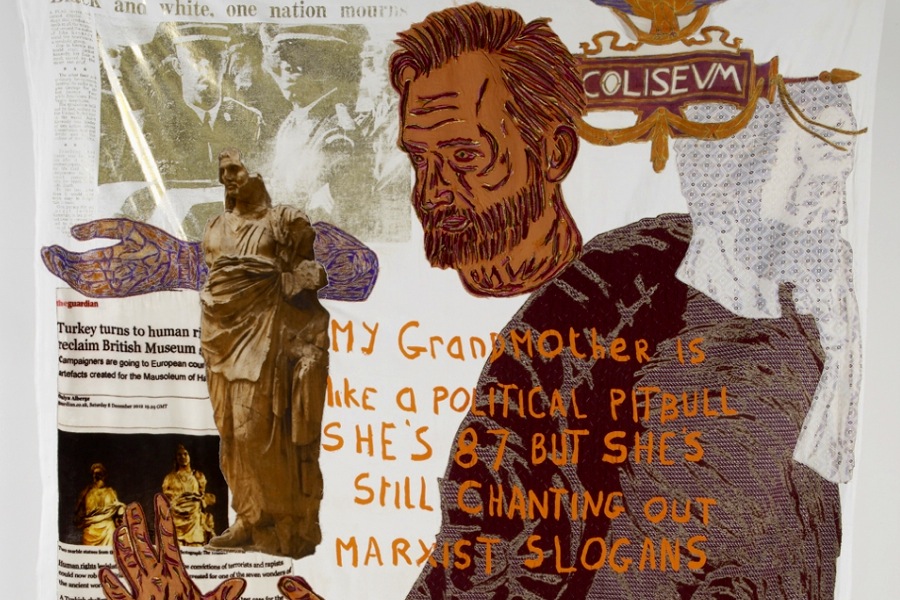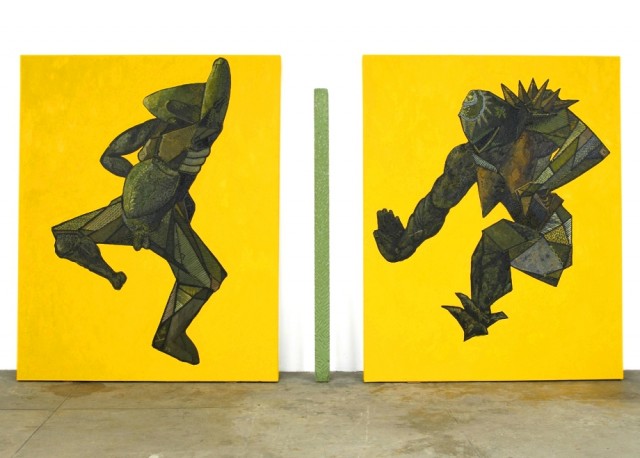Bloomberg New Contemporaries: Traditional Vs Contemporary

Don’t be confused by the venue, says Abigail Stokes; the hidden Victorian gallery in Liverpool’s children’s museum is the perfect place for this year’s batch of New Contemporaries…
Friday. Not only my first press view, but my first experience of the Bloomberg New Contemporaries; an annual competition where selected (recent) fine art graduates get a chance to show their work.
Receiving details of the exhibition in a press pack, my first thought was that the World Museum is a rather odd venue for a contemporary art show. Meeting a group of critics on the way in, we question this choice whilst getting lost in the bug emporium — a space designed for children with its bright colours, projections and soft play area. Beginning to think we are in the wrong place entirely, we eventually pass through a door and stumble into the silence of a white gallery. The space is grand: revealing the intimidating long windows and high ceilings of neo-classical architecture.
With an exhibition of different emerging artists that has no planned theme, the space becomes an important factor: it is the one constant point for the New Contemporaries to play with. Whilst other Liverpool Biennial spaces, like The Old Blind School and its musty, haunted corridors, give the work a sense of trepidation, this World Museum gallery gives a feeling of tradition and familiarity. This juxtaposition of traditional venue versus contemporary art poses an interesting question of how far current arts practice has become detached from historical methods.
So which dominates the show, the traditional or the contemporary?

For artist Henry Hussey, there is a risk of being over shadowed by Alice Hartley’s confrontational screenprint, We’re All Very Disappointed (2013); from floor to ceiling it demands your attention at the very start of the exhibition. However, Hussey’s The Guardian (2013) is looming at my shoulder, telling news stories with detailed tapestry work. “My grandmother is like a political pit bull”, it states, alongside Roman symbolism and photojournalism. I am hooked, not only by the text but also the combination of print on fabric. It is a clever use of traditional techniques, such as appliqué and embroidery, paired with contemporary digital printing.
Around the rest of the exhibition, an astonishing 24 video pieces account for almost half of the entries. So is this the medium of choice these days? Maybe, but as an art student I can vouch that video is a cheap way to produce and store work. So as studio spaces are increasingly tight and materials expensive, it seems to add up that there is such an influx of video. A traditional painting is best viewed in the flesh and doesn’t translate well to screen; however, in the age of social media, a video is easily shared in its correct format, thus another reason to encourage the use of this medium.
In this case, all but one of the videos come with a sculptural twist — each piece is viewed on a tv sitting on a plinth like a bust in a stately home, a traditional way to present the most contemporary medium in the show. However, this repeated 24 times causes me to lose focus; I start to treat all the videos the same, not wanting to stand and watch after the first three or four. This only draws more emphasis on the other works, curated and presented in a variety of ways, the — by default — ask for more consideration.
Hussey’s method of reversing traditional methodology by displaying it in a contemporary manner also works for Miroslav Pomichal’s Mismatched Couple (2013). Standing on the floor, oil-painted canvases lean on the wall like real people, a wooden rod sits between them and an arresting yellow background draws attention no frame could attract. Through this installation, the pieces take away the typical vantage point of the viewer, insisting they interact with the work in an unconventional way.
The venue that was originally a confusing choice becomes a point of comparison; we aren’t detached from the historical methods, in fact, the classic building simply helps remind us how far art has evolved. Elements of the traditional are shown in Hussey’s tapestry and Pomichal’s use of paint, alongside other works of sculpture, etchings and drawings. However, these pieces are transformed when they connect with contemporary digital prints and re-thought methods of hanging, showing that artists are readily considering a new combination of the traditional and contemporary.
Original and stimulating work dominates this year’s New Contemporaries, using tradition as a guideline. It is a show that anyone could appreciate and be excited about.
Abigail Stokes
This review was the result of a public #BeACritic afternoon for aspiring critics, hosted by The Double Negative, at the press view of Bloomberg New Contemporaries 2014 — more here
Read more on the #BeACritic campaign here
Bloomberg New Contemporaries continues at the World Museum, Liverpool until Sunday 26 October 2014. It then travels to the ICA, London from 26 November 2014 until 25 January 2015





